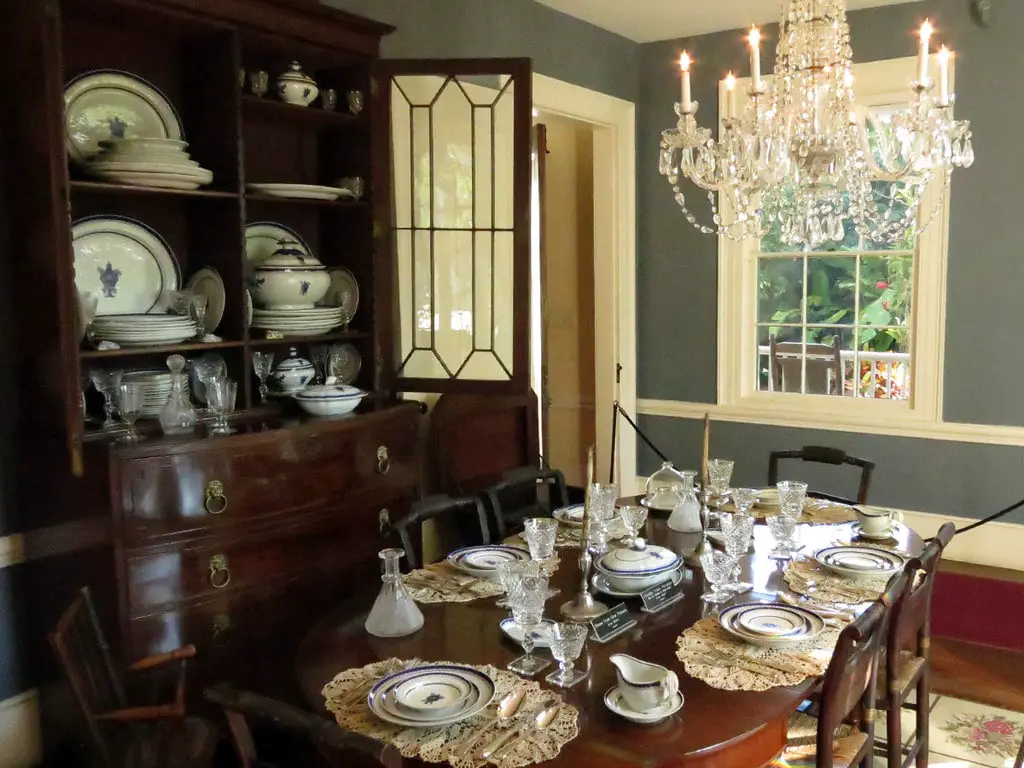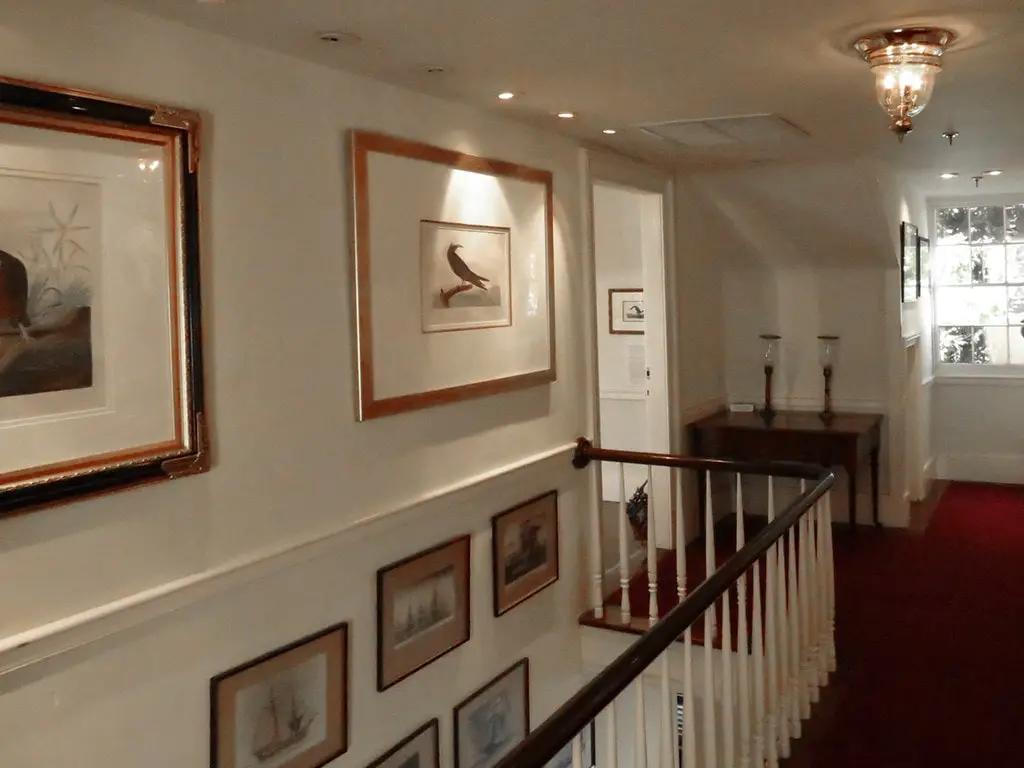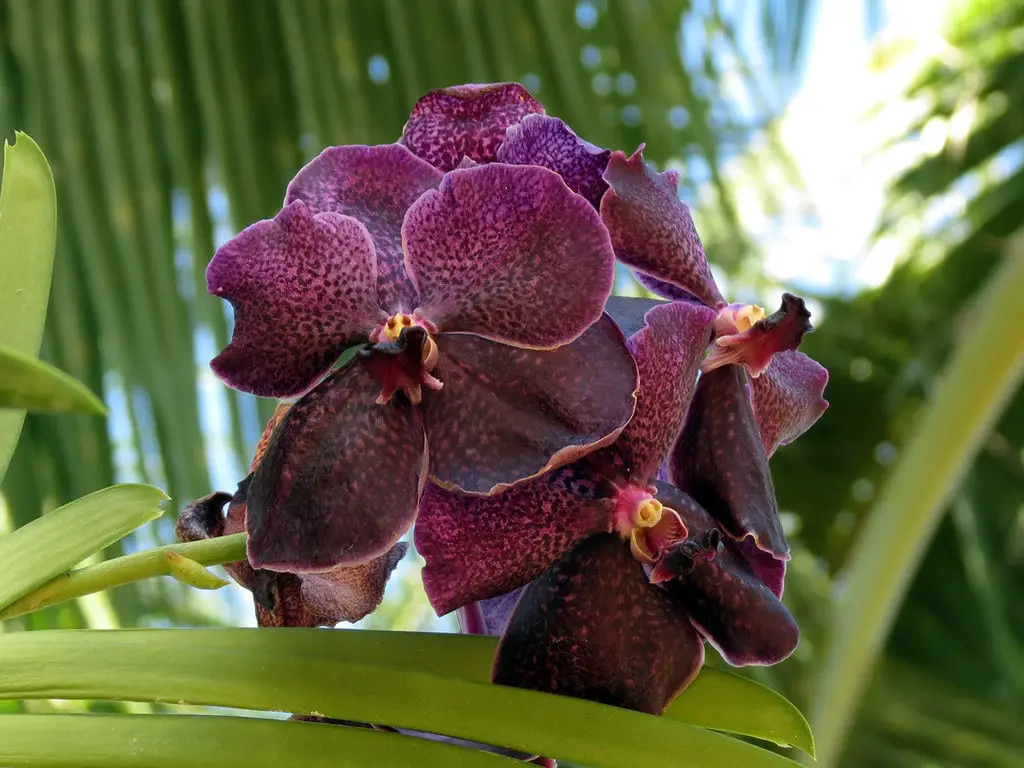The Historical Significance of Audubon House
Nestled in the heart of Key West, Florida, the Audubon House stands as a testament to the rich history and architectural grandeur of the mid-19th century.
Constructed between 1846 and 1849, this majestic structure was the brainchild of Captain John Huling Geiger, a prominent maritime pilot and master wrecker. His vision brought to life a residence that served as a family home for over a century and a beacon of historical significance in Key West.
The Audubon House, with its American Classic Revival architectural style, reflects the prosperity and cultural richness of Key West during a time when the city was burgeoning as a maritime hub. The era was marked by frequent shipwrecks on the offshore reef, leading to a flourishing shipwrecking industry.
This industry not only boosted the local economy but also influenced the architectural and social landscape of Key West. With its grandeur and elegance, the house is a physical embodiment of this prosperous period.
Key West, during the mid-1800s, was a melting pot of cultures and industries. The city’s strategic location made it a pivotal maritime center, attracting diverse people and professions.
The Audubon House, in its prime, stood amidst this bustling environment, offering a glimpse into the luxurious lifestyle of a wealthy shipwrecking family. Its significance extends beyond being a family residence; it represents a crucial piece of Key West’s maritime history.
The house’s connection to John James Audubon, the famed ornithologist and painter, adds another layer to its historical importance. Audubon visited Key West in 1832 when the city became a vibrant maritime center. His journey to the Florida Keys and Dry Tortugas was pivotal in his quest to document the birds of America.
The Audubon House, with its lush gardens and tropical foliage, is believed to have inspired Audubon, who reportedly sighted and drew several new birds during his stay in Key West. This connection highlights the house’s role in Audubon’s work and cements its place in the broader narrative of American natural history.
Today, the Audubon House is a significant landmark in Key West, attracting visitors interested in history, architecture, and nature. It stands as a proud reminder of the city’s rich maritime past and its role in the life and work of John James Audubon.
For those exploring things to do in Key West, Florida, visiting the Audubon House offers a unique opportunity to step back in time and experience the elegance and history of this remarkable city.
The Rescue and Restoration of a Key West Gem
The Brink of Demolition and a Timely Rescue
In 1958, the Audubon House, a symbol of Key West’s rich history, faced imminent destruction. The once magnificent structure, by then in a state of disrepair, was on the verge of being demolished to make way for a modern gas station.
This alarming development caught the attention of the Mitchell Wolfson Family Foundation, a nonprofit educational organization known for its commitment to cultural preservation.
The Wolfson family, deep roots in Key West dating back to the 1870s when they owned a goods store on Duval Street, stepped in to save this historical landmark. Their intervention marked a turning point for the Audubon House and the architectural preservation movement in Key West.
The Restoration Movement Ignites
The Wolfson family’s purchase and subsequent restoration of the Audubon House ignited a restoration movement in Key West, particularly in the city’s Historic Old Towne District. The large-scale restoration, spearheaded by the Wolfsons, was a pioneering project in Key West.
It involved meticulous efforts to preserve the original structure while restoring its former glory. The project attracted attention from various quarters, including local historians, architects, and those interested in safeguarding Key West’s unique cultural heritage.

Legacy of the Wolfson Family
The Wolfson family’s decision to restore the Audubon House was influenced by more than just architectural interest. Their ties to Key West, established through their early business ventures and sustained even after relocating to Miami in the 1920s, played a crucial role.
Local citizen and family friend Jessie Porter alerted Mitchell and Frances Wolfson to the impending destruction of the Geiger home. Their intervention was partly motivated by the local folklore surrounding John James Audubon’s connection to the house, which they envisioned as a historical museum.
This act of preservation by the Wolfson family saved a significant piece of Key West’s history and set a precedent for future restoration projects in the area.
John James Audubon’s Legacy and the House
Audubon’s Visit and Artistic Inspiration
The renowned ornithologist and painter John James Audubon visited Key West in 1832. This visit was a significant chapter in his quest to document the birds of America. The lush gardens and diverse animal life at the Audubon House provided Audubon with rich material for his work.
It is believed that during his stay, he sighted and illustrated several new bird species, which were later featured in his famous “Birds of America” folio. The house’s natural setting was pivotal in inspiring Audubon’s artistic endeavors.
The Collection of First-Edition Works
Today, the Audubon House houses an impressive collection of 28 first-edition works by John James Audubon. This collection is a tribute to Audubon’s legacy and a significant attraction for visitors and art enthusiasts.
These works within the house’s walls create a tangible connection between the artist and the place, offering guests a unique opportunity to view Audubon’s work in a setting that inspired him.
The Geiger Tree and Audubon’s Art
A notable feature of the Audubon House is the Geiger tree, prominently featured in Audubon’s painting of the white-crowned pigeon. This tree in the house’s front yard is more than just a botanical specimen; it represents a living link to Audubon’s time in Key West.
The inclusion of the Geiger tree in Audubon’s artwork exemplifies the interplay between the natural world and artistic expression, highlighting the importance of the house’s gardens in Audubon’s work.
This connection between the artist and the natural environment of the Audubon House is a testament to the site’s historical and cultural significance.

The Tropical Gardens: A Botanical Treasure
A Lush 1-Acre Tropical Haven
The Audubon House is renowned not just for its historical architecture but also for its sprawling tropical gardens. Covering a lush 1-acre area, these gardens are a horticultural masterpiece showcasing diverse flora.
Visitors can wander through paths lined with vibrant orchids, bromeliads, and a variety of tropical foliage, offering a serene escape in the heart of Key West. The gardens are meticulously maintained, preserving their original 1840s style and layout, which includes a historic herb garden and a nursery reminiscent of the era.
The 1840-Style Nursery and Herb Garden
Central to the Audubon House’s gardens is the 1840-style nursery, a living exhibit of the gardening techniques and plant varieties of the mid-19th century.
This nursery, alongside the herb garden, provides a glimpse into the horticultural practices of the time and the types of plants popular in Key West’s subtropical climate. The herb garden, in particular, is a nod to the culinary and medicinal uses of plants during the period, offering an educational aspect to the garden’s allure.
A Sanctuary for Flora and Fauna
The gardens of the Audubon House are more than just a display of tropical beauty; they serve as a sanctuary for various species of plants and birds. This biodiversity not only enhances the aesthetic appeal of the gardens but also plays a crucial role in local ecological conservation.
The gardens have become a haven for birdwatchers and nature enthusiasts, who come to observe the native and migratory birds that frequent this verdant oasis. The preservation of these gardens ensures that the natural heritage of Key West is maintained for future generations to enjoy.
Inside the Audubon House: A Glimpse into the Past
Antique Furnishings and Artifacts
Stepping inside the Audubon House is like traveling back to the 19th century. Each room is adorned with antique furnishings and artifacts that vividly depict life in a wealthy Key West family home during this era.
The house features an array of period-appropriate pieces, from ornate furniture and elegant decor to historical paintings and photographs. These items have been carefully curated to maintain the authenticity of the house’s interior, offering visitors an immersive historical experience.
Architectural Layout and Design
The architectural layout of the Audubon House reflects the American Classic Revival style, characterized by its symmetry, grandeur, and attention to detail. The house features multiple levels, each designed to serve specific functions in the daily life of the Geiger family.
Notable architectural elements include circular wooden accents and grand multi-poled verandas, a signature of the house’s original builder. These design elements add to the house’s aesthetic appeal and provide insights into the architectural trends of the time.

Reflecting a Prosperous Lifestyle
The interior of the Audubon House is a testament to the prosperous lifestyle Key West’s elite enjoyed in the 1800s. The elegant dining rooms, spacious living areas, and well-appointed bedrooms all speak to the comfort and luxury afforded by the booming shipwrecking industry.
The house’s layout and furnishings offer a window into the social and cultural norms of the period, highlighting the affluence and sophistication that were hallmarks of upper-class life in Key West during the 19th century.
The Audubon House Gallery and Its Collections
A Unique Collection of 19th Century Original Audubon Art
The Audubon House Gallery, a separate entity from the main house, is a treasure trove of art from the 19th century. It houses an exclusive collection of original works by John James Audubon, offering a rare glimpse into the artistic legacy of this renowned naturalist and painter.
The gallery’s collection includes a variety of Audubon’s bird and wildlife illustrations, each showcasing his meticulous attention to detail and profound appreciation for the natural world.
Comprehensive Selection of John James Audubon’s Images
Beyond the original artworks, the gallery also features a comprehensive selection of Audubon’s images. This extensive collection allows visitors to explore the breadth of Audubon’s work, from his well-known bird illustrations to lesser-known sketches and studies. The various displayed pictures highlight Audubon’s versatility as an artist and his enduring impact on wildlife art.
The Gallery’s Contribution to the Visitor Experience
The Audubon House Gallery enhances the visitor experience by offering a deeper understanding of John James Audubon’s work and its connection to the house and gardens. The gallery serves as a cultural and educational resource and a space where art and history converge. Visitors leave with a richer appreciation of Audubon’s artistry and the historical context in which he created his masterpieces.
Audubon House Today: A Cultural and Educational Hub
Museum and Educational Center
Today, the Audubon House stands as a vibrant museum and educational center. It plays a pivotal role in preserving and interpreting the history of Key West and the legacy of John James Audubon.
The house offers educational tours and programs, providing insights into the area’s historical, cultural, and natural heritage. Its role as an educational hub extends to various community outreach programs, making history accessible and engaging for all ages.

Hosting Events and Exhibitions
The Audubon House is a historical landmark and a venue for various cultural events and exhibitions. These events range from art exhibitions and historical lectures to community gatherings and private events.
Each event held at the Audubon House is imbued with the historical ambiance of the venue, making it a sought-after location for both cultural activities and private celebrations.
Significance in Key West’s Historic Old Towne District
As a key landmark in Key West’s Historic Old Towne District, the Audubon House contributes significantly to the area’s charm and historical significance. Its preservation and ongoing role as a cultural center underscore the importance of historical landmarks in maintaining the unique character of Key West.
The house continues to attract visitors worldwide, drawn by its historical significance, architectural beauty, and the enduring legacy of John James Audubon.
